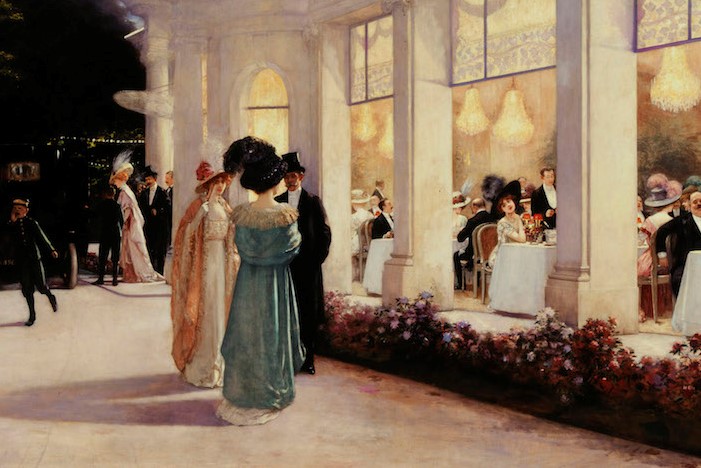Consider the parallels between the Belle Époque of Paris during the late 19th and early 20th centuries – and the today’s rapidly expanding American cities.
The World’s Fair of 1889 had brought culture, optimism and the Eiffel Tower to that French metropolis. Napoleon III and Baron Haussman were busily reimagining its urban fabric. Then the Exposition Universelle of 1900 promised to embellish further the city’s celebration of fashion, art and entertainment.
None of that’s been lost on the curators at the Frist Art Museum in Nashville, Tenn. “There are quite a few similarities between the City of Light and Nashville, which is now booming – with 100 people a day moving here,” says Frist curator Katie Delmez. “There’s a massive construction boom and a need for public transportation in a city where the creative industries are drawing people here, temporarily and permanently.”
Little wonder, then, that the Frist would jump at the chance to bring “Paris 1900: City of Entertainment” to Nashville from the Petit Palais in France. That’s the museum created for the 1900 Expo, and which organized the new exhibition in 2014.
It’s broken up into six sections, meant to be wandered through like a meandering Parisian street, rather than a rigorous walkway. “It’s not a chronology, but a look at the dramatic areas of work that were being produced,” she says.
Among them are photo murals of the Expo, including the Eiffel Tower and the Seine, along with documentary films from the groundbreaking Lumière Brothers. There’s also a section for walking, biking or taking the Metro. “You traverse in different ways and there are new ways to do that – the Metro was finished just in time for the Expo,” she says.
There’s “Paris by Night,” with restaurants, opera, theater, cabarets and cafés, and the “Capital of the Art World,” with works by Renoir, Rodin and Pissarro. “There are broader and less known but equally impressive artists too, and a range of styles, like the Symbolists,” she says.
Then there’s “La Parisienne,” about fashion across social boundaries. “There’s a range of attire for how Parisian women really led the way, and not just from fashion houses,” she says. “Even the lower classes took it very seriously – everything didn’t have to be haute couture, because off-the-rack was successful too.”
All of it’s a celebration of Paris at the turn of the 20th century. “It was a period full of optimism and progress, one that came to end with the outbreak of World War I,” she says.
Actually, it lingers still in the architecture and urban planning across the City of Light. And for anyone curious about how an American city might become truly great and beautiful, here’s an exhibit that covers the topic with grace and exuberance.
For more, go here.
[slideshow id=1950]

